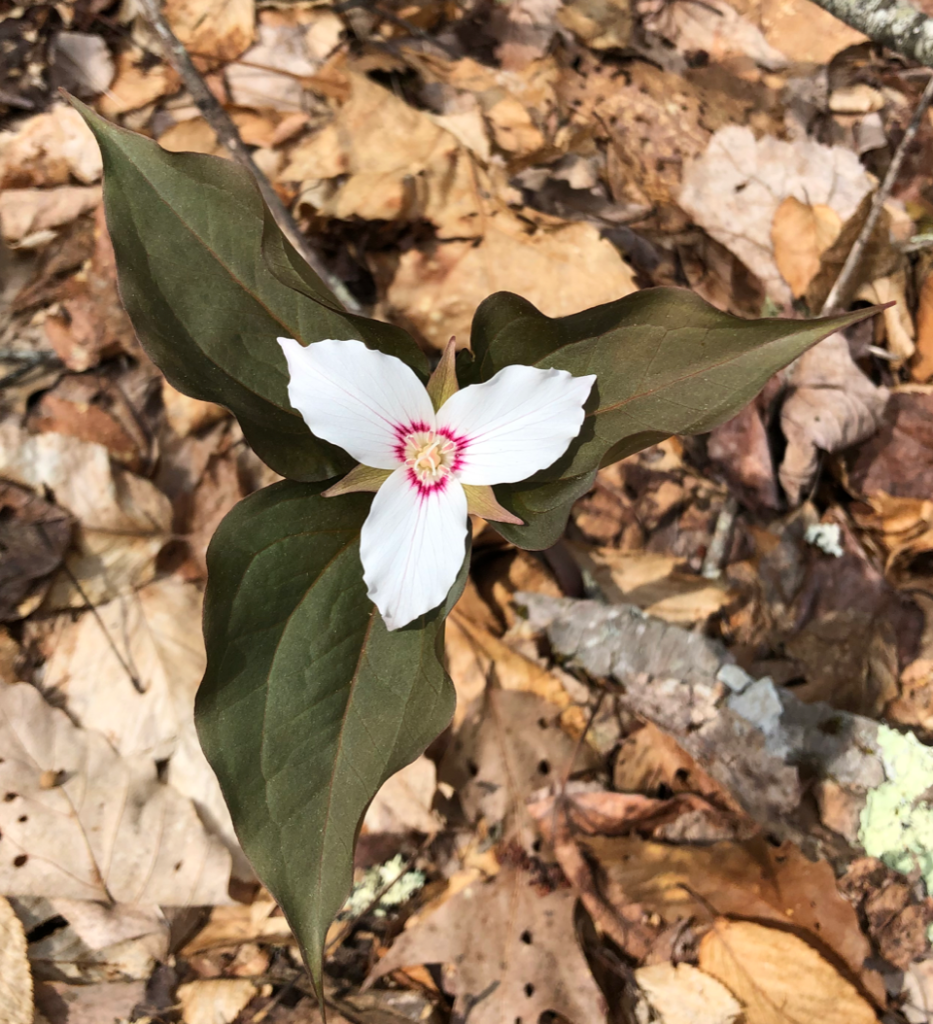By Ann Walter-Fromson
I always look forward to going to new places to botanize with fellow native plant enthusiasts. The NCNPS Spring Hikes provided a great opportunity to see an abundance of spring wildflowers, meet new people, and learn more about our beautiful North Carolina native plants.
At the Thomas Divide Trailhead
On Saturday, April 30, my friend Susie Bell and I participated in the Thomas Divide hike up to the ridge line followed by a long walk down the mountain on the Kanati Trail. Our hike leader that day, Dr. Kathy Mathews, a biology professor at Western Carolina University, was an excellent guide to the plants, answering the many questions generated by our group. Starting at close to 5000’ elevation, we experienced wildflowers of early spring — the delicate blooms of Fringed Phacelia (Phacelia fimbriata), Painted Trillium (Trillium undulatum), recently reclassified as a Trillidium, and the most spectacular fields of trout lilies we have ever seen. These plants looked larger than the Dimpled Trout Lily (Erythronium umbilicatum) of the Piedmont region where I live. With some exploration of the plant’s bulb and roots, Kathy concluded that this was Southern Appalachian Trout Lily (Erythronium umbilicatum ssp. monostolum), a mountain subspecies.
Intriguing Shrubs and Trees
Other intriguing mountain plants included the shrubs Minnie Bush (Menziesia pilosa), a member of the heath family (Ericaceae) with urn-shaped flowers, and Hobblebush (Viburnum lantanoides), also known as Witch-hobble or Moosewood, which grows in spruce-fir forests, Northern hardwood forests, and boulderfields, primarily over 1000 feet in elevation.
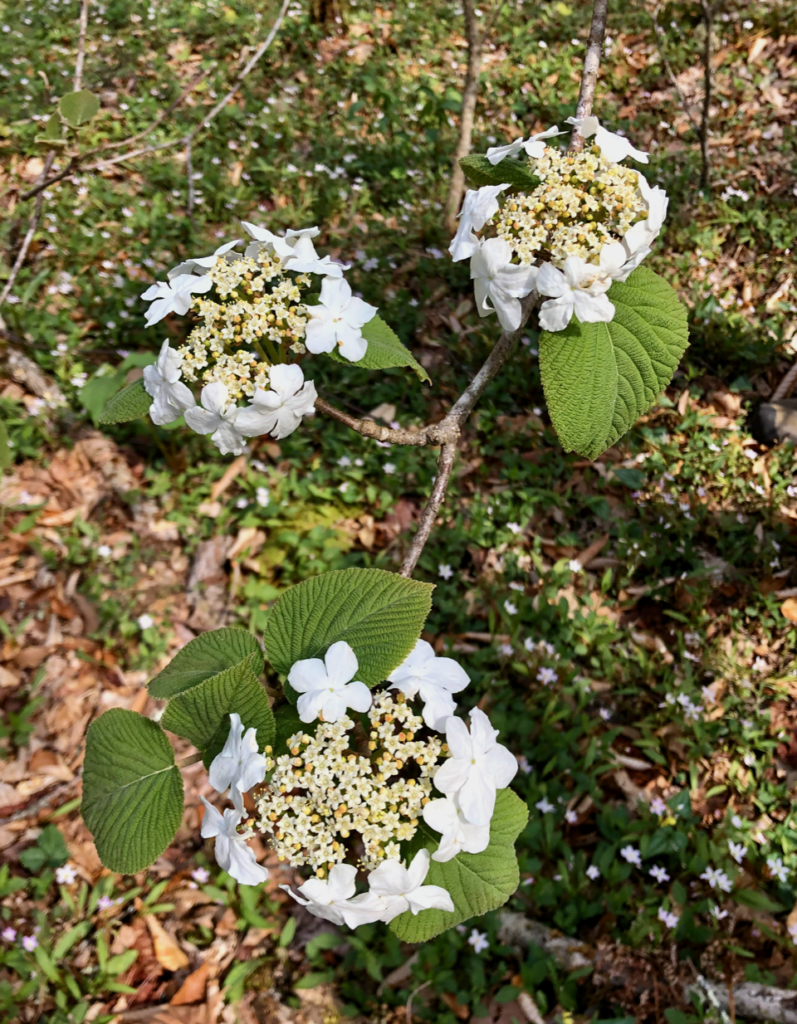
Susie especially enjoyed getting close-up looks at the peeling bark of Yellow Birch (Betula alleghaniensis), the striped greenish bark of Striped Maple (Acer pennsylvanicum), and the shaved chocolate appearance of the bark of Mountain Silverbell (Halesia tetraptera).
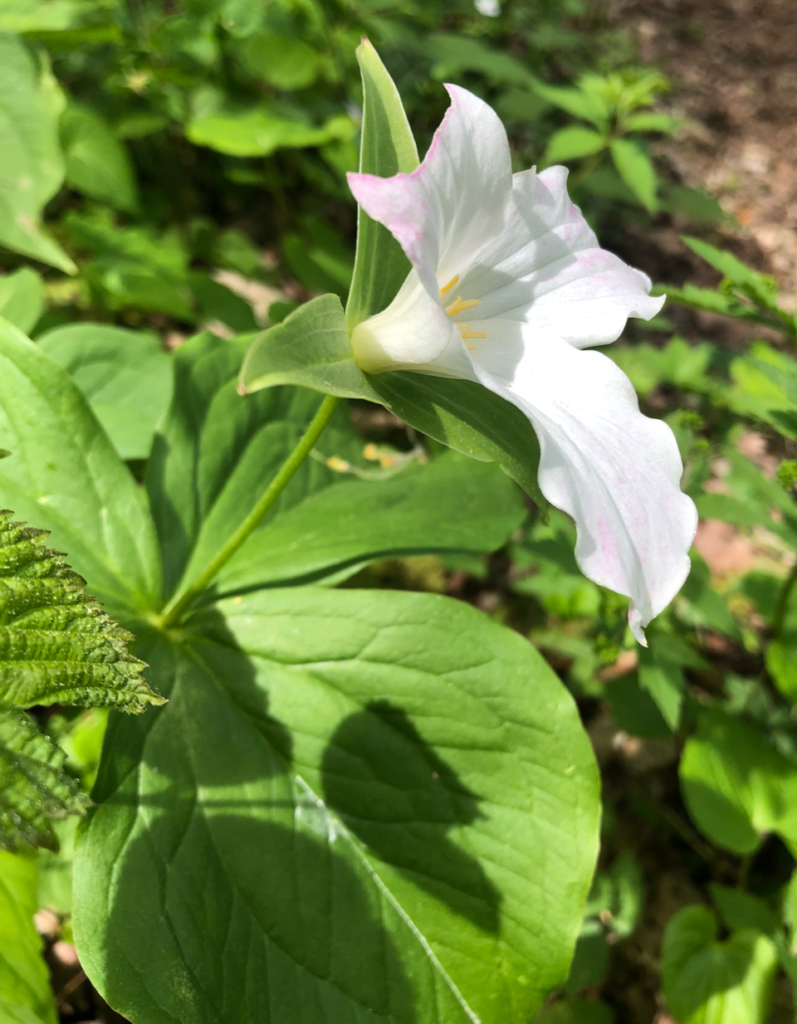
The Kanati Trail
After lunch on the ridge top, we descended along the Kanati Trail. As we reached lower and lower elevations we saw later spring blooms and a greater variety of flowering species. Trillium were abundant which made species comparisons easier. Kathy pointed out the trumpet shape of Large-flowered Trillium (Trillium grandiflorum) with petals that overlap at the base of the flower, which differs from the White-flowered Red Trillium (Trillium erectum var. album) in which the petals attach flatly to the flower stalk and don’t overlap.
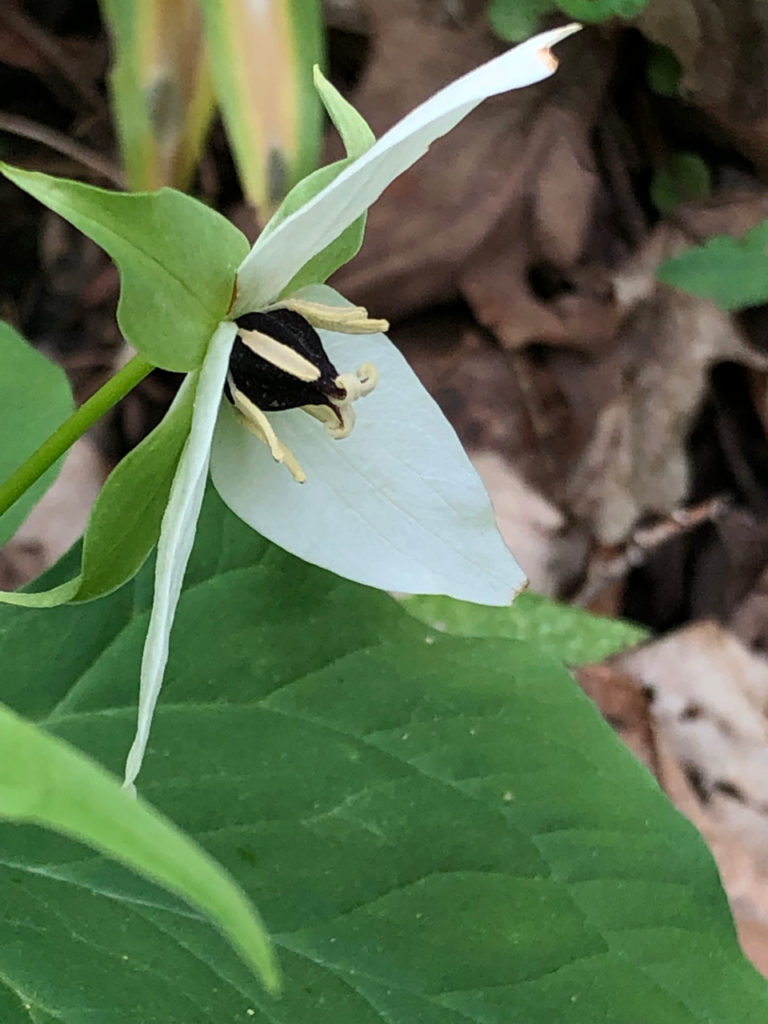
The impressive Vasey’s Trillium (Trillium vaseyi) and Dwarf Ginseng (Panax trifolius) were highlights for Susie on this part of the hike.
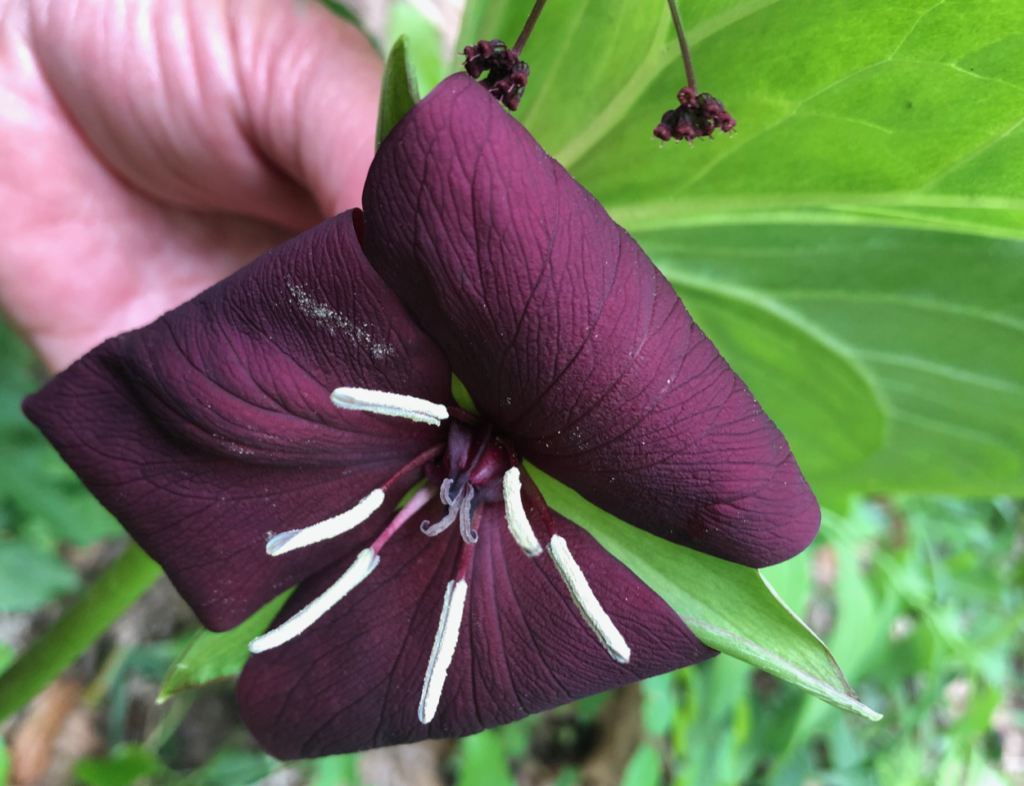
I especially enjoyed seeing Umbrella-leaf (Diphylleia cymosa) and Brook lettuce (Micranthes micranthidifolia) in bloom. Both are endemic to the Southern Appalachian mountains and are typically found in seepages and on brook-banks.
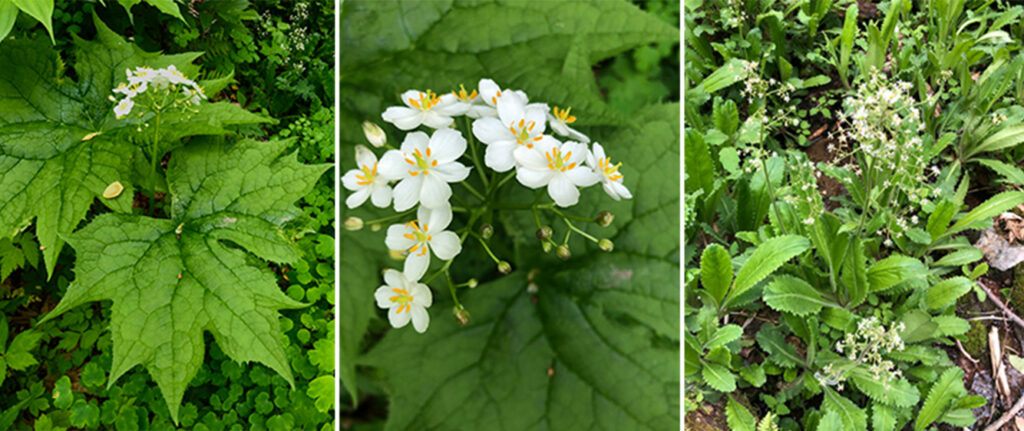
Big Laurel at Alarka Creek Headwaters
Owen Carson, a plant ecologist with Equinox, an ecological consulting, planning, and design firm in Asheville, was our leader for the Sunday morning hike at the Alarka Creek headwaters. He provided a helpful review of fire ecology and an informative introduction to the geology of the area that resulted in a bowl-shaped wet area. At over 4000’ in elevation, this area is a rare remnant Red Spruce (Picea rubens) bog which supports numerous flowering plants, such as Yellow Fringed Orchid (Platanthera ciliaris), Club-spur Orchid (Platanthera clavellata), and Showy Orchis (Galearis spectabilis).
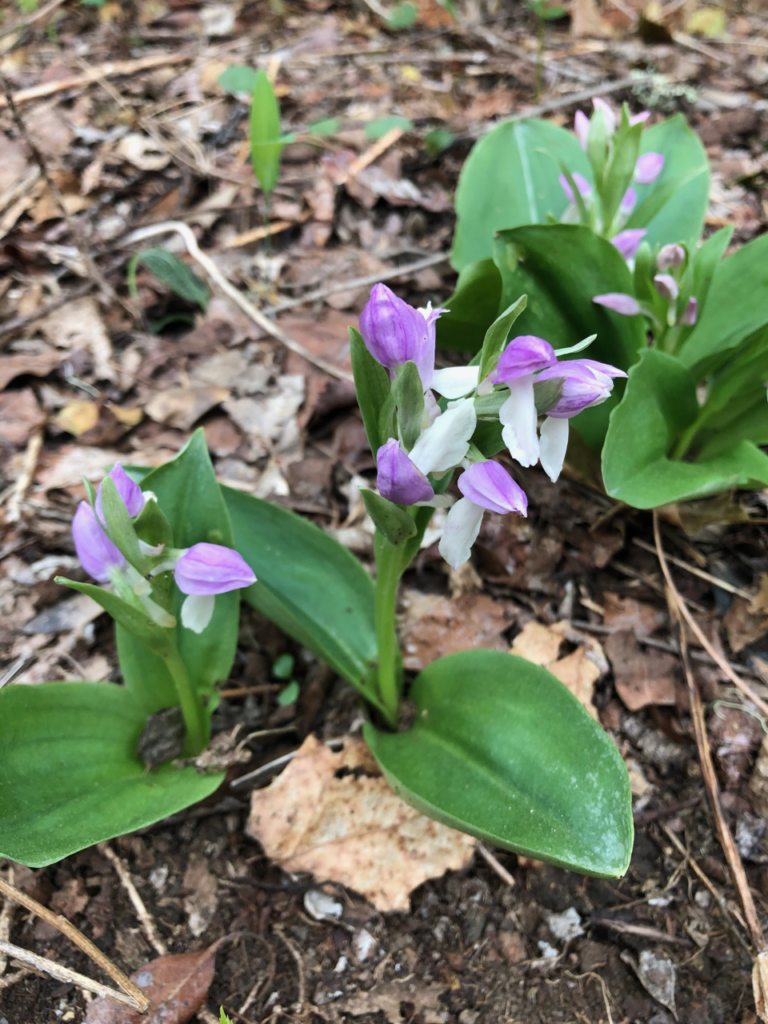
As the area had recently undergone a prescribed burn, the fresh green foliage of understory plants was just emerging. Among the emerging plants I was excited to see were American Lily of the Valley (Convallaria pseudomajalis), Canada Mayflower (Maianthemum canadense), Eastern Wild Indigo (Baptisia tinctoria,) and Bird’s-foot Violet (Viola pedata).
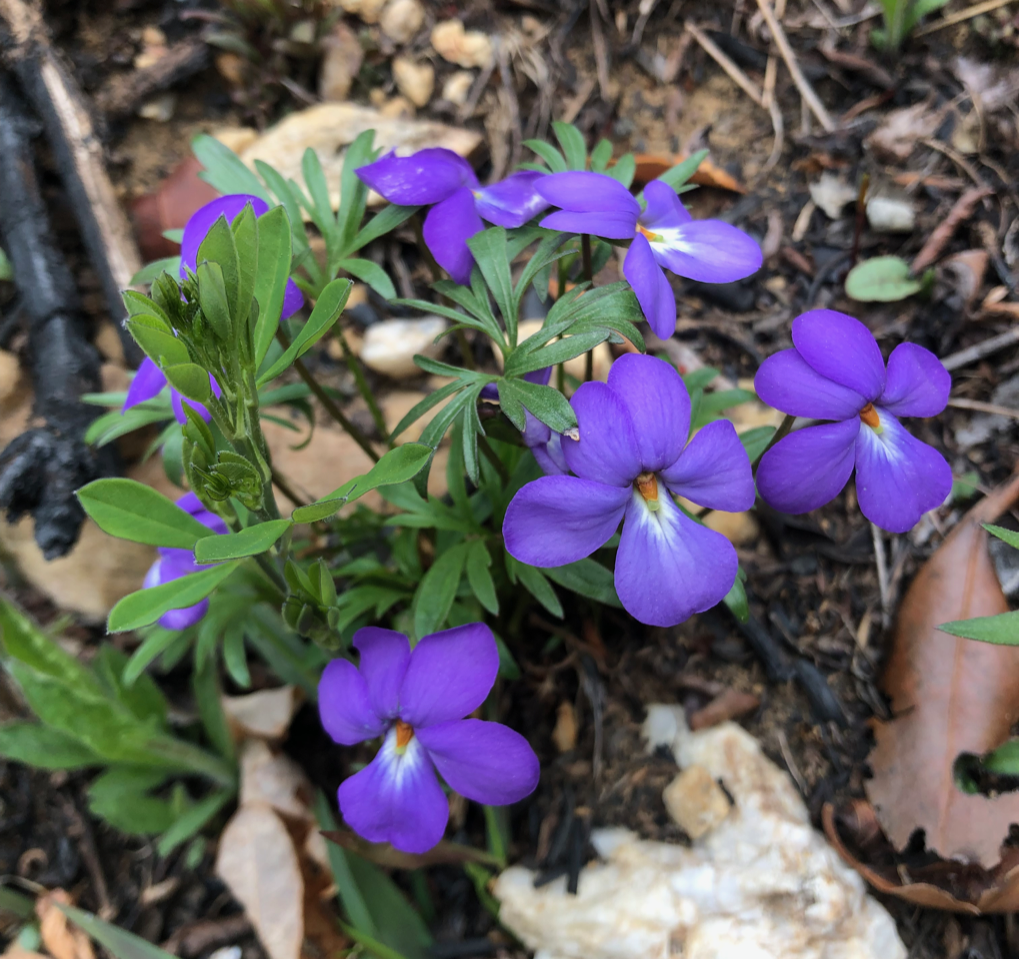
We were surprised to discover that a plant that looked very much like blackberry was actually Bowman’s Root (Gillenia trifoliata).
A new friend, Cynthia Woodsong, who participated in our hikes both days, has only recently begun studying native plants. For her, all the plants were new and exciting. She was delighted to learn that Rattlesnake Fern (Botrypus virginianus) is sometimes called “Sang-find,” because it often grows in proximity to Ginseng. And as a serious hiker, she was glad to learn that it’s okay to take six hours to hike four miles!
Read more about the Spring Hike Weekend events: Ken Bridle reviews CoryPine Shane’s Book Southeast Medicinal Plants and view a slideshow of the wildflowers and plants observed during the hikes—Did You Spot These Plants.
By Ann Walter-Fromson
Native Plant News – Fall 2022

A retired psychology professor, Ann Walter-Fromson is an active member of the Triad chapter of the NC Native Plant Society, T. Gilbert Pearson Audubon Society in Guilford County, and Piedmont Bird Club. She is a certified NC Environmental Educator and a 2017 graduate of the Certificate in Native Plant Studies program at the NC Botanical Garden in Chapel Hill, for which she conducted an independent research study of pollinators attracted to the native plants in her yard.
Copyright © 2022 North Carolina Native Plant Society. All rights reserved.
